
-
Explore
-
Resources
- Plans

How to Start a Job Board Business
Subscribe to The Job Board Academy
Content
- Identify Your Target Audience and Niche
- Build a Job Board Website
- Create a Pricing Model
- Create a Marketing Plan
- Develop Relationships With Employers
- Create a Customer Service Plan
- Analyze and Improve Your Performance
- Manage Risks and Challenges
- Current Industry Trends
- How to stay ahead of Industry Trends and Best Practices
- Conclusion
Are you thinking about starting a job board business? In this article, we'll cover everything you need to know to get your job board up and running.
Online job boards are platforms that allow job seekers to search for open positions and employers to advertise their vacancies. For a more in-depth definition and examples check out our post on what is a job board.
We'll start by discussing the importance of identifying your target audience and niche. Next, we'll explain how to choose a niche for your job board, and we'll discuss the different options to create a niche job board.
Finally, we'll cover some key strategies for launching and promoting your job board, as well as some tips for managing risks and challenges.
By the end of this article, you'll have a solid foundation for launching and growing your job board business.
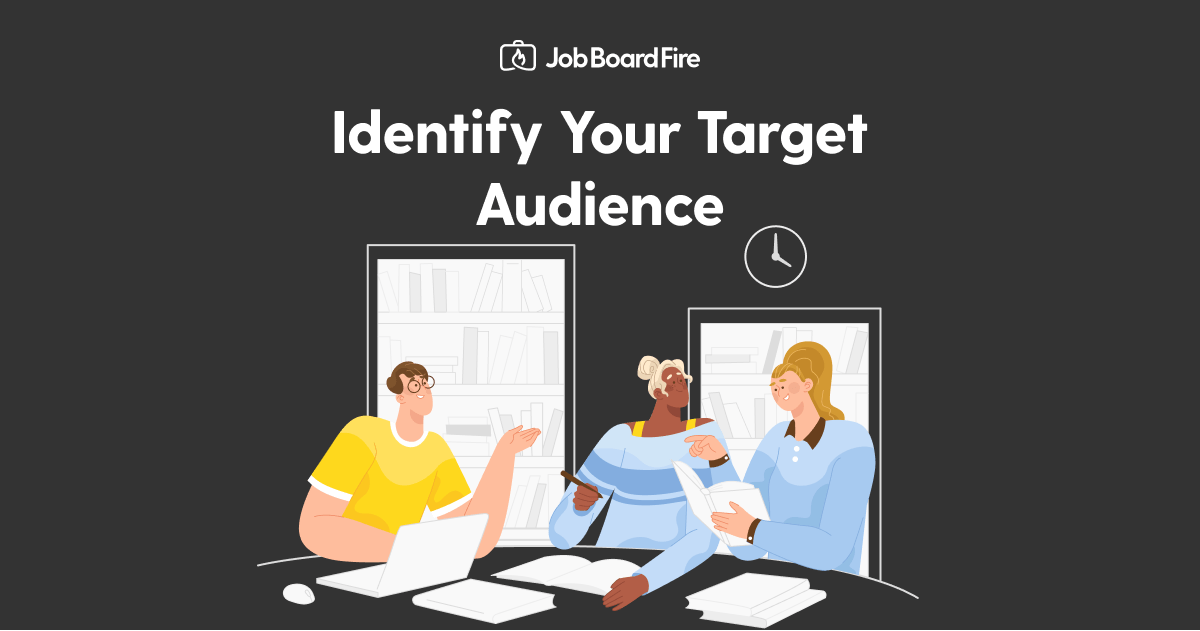
Identify Your Target Audience and Niche
Identifying your target audience and niche is an essential part of launching a successful job board business.
The Benefits of Choosing a Niche for Your Business
Choosing a niche is one of the most effective ways to grow a successful job board in today’s competitive market. Instead of competing with large, generalist platforms, narrowing your focus to a specific industry, audience, or region lets you offer a more relevant and valuable experience. It helps attract qualified candidates and employers, supports targeted marketing, and builds trust through specialized content and resources. A clear niche also strengthens your brand, boosts credibility, and opens the door to meaningful partnerships. Ultimately, it allows you to focus your efforts, stand out, and build a more engaged, sustainable community.
How to Choose a Niche for Your Job Board
When it comes to choosing a niche for a job board business, there are a few key factors to consider. First and foremost, it’s important to identify the types of job seekers and employers you want to help.
Start by identifying industries or sectors with strong job demand—both locally and within remote work trends. At the same time, consider areas you’re personally passionate about or have experience in. For example, if you have a background in healthcare, creating a healthcare-focused job board could be a natural fit. This personal connection can make the work more rewarding and give you valuable insight into the needs of your target audience.
Once you know the types of job seekers and employers you want to support, do some market research to see if there’s real demand for your idea. Use tools like Google Trends, LinkedIn Insights, and Reddit communities to explore interest and engagement. You can also run simple surveys to gather extra feedback. This research will help you choose the right niche and shape a business plan that fits your audience.
Overall, choosing a niche for your job board business requires a combination of market research, strategic planning, and personal alignment. By carefully considering these factors, you can select a niche that is well-suited to your target audience and has the potential to grow and succeed.
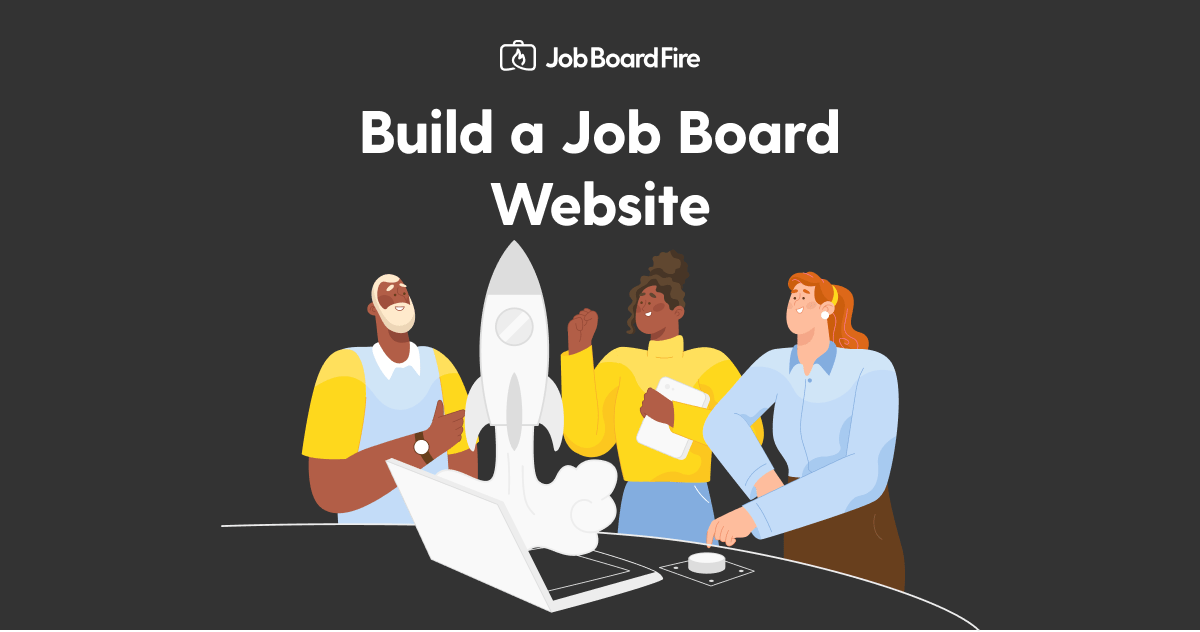
Build a Job Board Website
Creating a website is a critical step in launching and growing your job board. You can use dedicated job board software, customize a website builder, or work with a development team to build a custom solution. Each option has its pros and cons, so choose the one that best fits your goals, budget, and technical requirements.
When To Use Job Board Software
If you choose to use job board software, you can take advantage of pre-built features and functionality that are specifically designed for job boards. This can save you time and money, as you won’t have to build everything from scratch.
When To Use a Generic Website Builder
Using a website builder can be a more affordable option, and it allows you to easily create a basic job board website if you have enough technical expertise. Many website builders also offer pre-built templates and features that are specifically designed for job boards, which can save you time and effort. However, website builders can be limited in terms of customization, are troublesome to maintain, and don’t offer as many advanced features as job board software.
When To Hire a Software Development Team
Hiring a development team can be the most expensive option, but it also gives you the most control over the design and functionality of your website. A development team can create a custom website that is tailored to your specific needs and goals, and they can also help you to add advanced features and functionality. However, hiring a development team can be time-consuming and may require a significant investment.
What Makes a Good Job Board Website?
Regardless of the option you choose, it’s important to design a user-friendly and professional-looking website. This can include using clean, modern design elements, as well as making sure that your website is easy to navigate and use.
Additionally, you’ll want to add necessary features that are essential for job boards, such as:
- SEO and Google for Jobs integration: One essential feature of a job board is robust search engine optimization (SEO) and integration with Google for Jobs. These ensure your platform is easily discoverable by search engines, helping increase visibility and reach. By optimizing your site for relevant keywords and implementing structured data, you can improve your rankings in search results, making it easier for job seekers and employers to find your listings. Google for Jobs integration further enhances discoverability by displaying your postings directly within Google’s job search interface. Together, strong SEO and Google for Jobs integration drive more qualified traffic to your site, boost engagement, and contribute to the long-term success of your job board.
- Modern, easy to use, and remote-friendly job search experience: A modern, easy to use, and remote-friendly job search experience is a key feature of any job board. This means that job seekers can easily and quickly find relevant job postings that fit their preferences and qualifications, regardless of whether they are looking for in-person or remote positions. By providing a user-friendly and intuitive search experience, you can help job seekers to find the right opportunities more quickly, which can increase engagement and retention on your platform. Additionally, by making it easy for job seekers to find remote positions, you can help to meet the growing demand for flexible and remote work opportunities.
- Talent network: A talent network is a feature that helps employers discover and connect with job seekers. This can include tools and resources that allow employers to search for job seekers with specific skills and experience, as well as tools that help job seekers to showcase their skills and qualifications. By providing a talent network, you can help employers to easily find and connect with potential candidates, and you can provide job seekers with a platform to showcase their abilities and stand out to potential employers. This can help to improve engagement and retention on your job board.
- Employer and job seeker communication: A way for employers and job seekers to communicate within the job board is an important feature that can help to improve engagement and retention on your platform. This can include tools and resources that allow employers and job seekers to easily connect and communicate in real-time, such as messaging and chat functions. By providing a way for employers and job seekers to communicate within your job board, you can make it easier for them to schedule interviews and discuss job opportunities, which can save them time and effort and ultimately improve the overall user experience. Additionally, by facilitating communication between employers and job seekers, you can increase engagement and retention on your job board.
- Customizable applicant tracking system for employers: A customizable applicant tracking system allows employers to easily track and manage the job application process, from posting a job to reviewing and interviewing candidates. By providing a customizable applicant tracking system, you can give employers the ability to tailor the system to their specific needs and preferences making them more efficient and effective. This can help to improve the overall user experience for employers, and make your job board more appealing and useful for them, which can save them time and effort.
- Flexible job taxonomy and filters: This can include options for categorizing jobs by category, location, type, salary, and any other relevant factors you can imagine. By taking advantage of flexible job taxonomy, you can make it easier for job seekers to find jobs that are relevant to their interests and qualifications, and you can make it easier for employers to find candidates who are a good fit for their job postings.
- Customizable fields for company and job seeker profiles: Decide what info employers and job seekers can fill out on their profiles, what's required, what's visible publicly, and what's searchable. This can include things like job seeker skills and experience, company size and industry, and more. By giving employers and job seekers the ability to tailor their profiles, you can make the job search experience on your platform more personal and relevant. It can also make it easier for employers and job seekers to connect and communicate.
- Ability to scrape and aggregate relevant jobs: Automatically collect and populate your job board with job postings from external sources, such as other job boards, company websites, and job search engines. This can save you time and effort, as you won’t have to manually enter job postings onto your job board. Additionally, by scraping and importing relevant jobs from other sources, you can make your job board more comprehensive and up-to-date, which can improve the user experience and make it more appealing to both job seekers and employers. Overall, the ability to scrape and import jobs from other sources is a valuable feature for any job board, as it can help to save time, improve the user experience, and keep job seekers coming back.
- Sophisticated monetization capabilities: Maximize revenue by offering and upselling high-margin, recurring products to employers at the right moments in their hiring journey. This can include sponsored job listings, premium placement, or access to advanced features that enhance visibility and attract more qualified candidates. With the right monetization tools, you can make it easy for employers to purchase services tailored to their goals—driving more value for them and more revenue for you. Recurring revenue streams also contribute to long-term financial stability and scalability. Be sure to choose a platform that supports your pricing strategy and growth model.
Creating a website for your job board business requires careful consideration and planning. By choosing the right platform or development team, and designing a user-friendly and professional-looking website, you can create a website that is effective and successful in helping job seekers and employers connect.
Looking for all of the above, plus platform extensibility, customizability, and stellar support at every step of your job board journey? Check out our job board software.
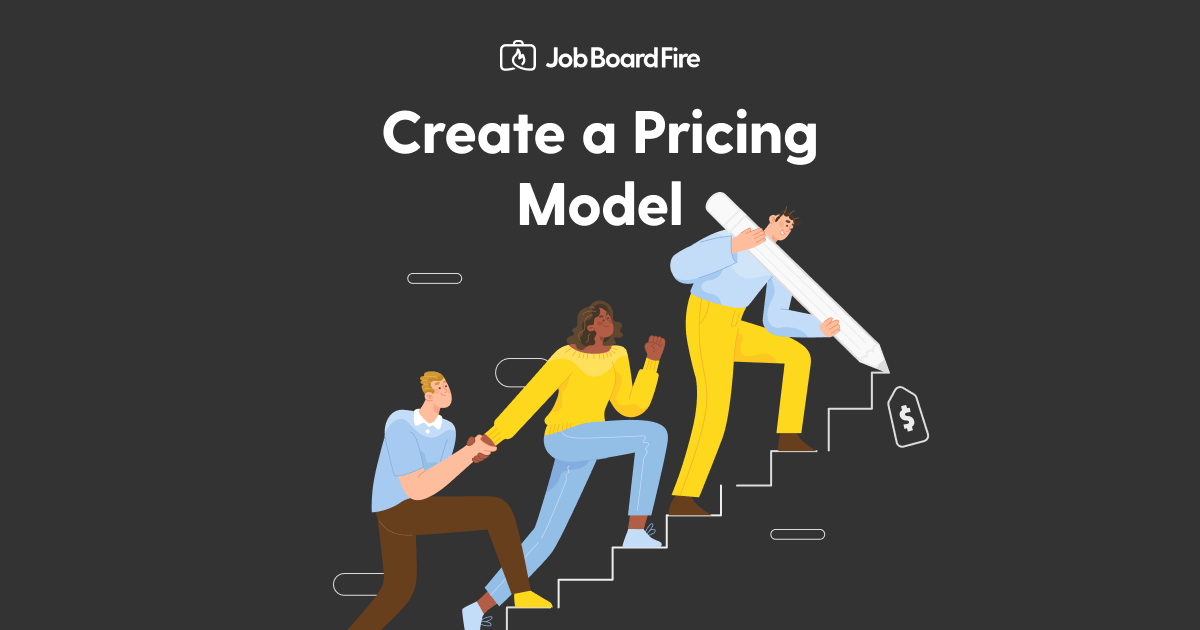
Create a Pricing Model
Developing a pricing model for a job board can be complex, as it requires balancing revenue goals with providing real value to employers and staying competitive in your market. A crucial first step is analyzing your industry’s pricing landscape—research what other job boards in your niche charge and how they structure their pricing. Use this insight to inform your own model and position your offerings effectively.
Once you understand the competitive context, you can begin defining how you'll price and package your core products. This often includes individual job post pricing, bundled job post packages at discounted rates, or tiered pricing based on visibility and duration. You may also consider offering value-added services, such as resume-building tools or application enhancement features for job seekers.
Upselling featured listings is another important component. These add-ons—such as highlighted posts, premium placement, or increased visibility in search results—allow employers to enhance their listings and attract better candidates, while increasing average order value for your platform.
In addition to selling job posts and featured listings, you can also consider selling access to your talent network. This can include offering employers the ability to search for and connect with job seekers who have specific skills and experience, as well as offering job seekers the ability to showcase their abilities and qualifications to potential employers. By selling access to your talent network, you can provide value to both employers and job seekers, and generate additional revenue for your business.
One of the most effective ways to generate steady, high-margin revenue is by offering subscription plans. Subscriptions can include job post credits, access to premium features, or ongoing visibility in your talent network. Monthly or annual plans create predictable income and improve customer retention.
Ultimately, your pricing model should reflect the value of your platform, align with customer expectations, and scale with your business. By combining competitive pricing, flexible packaging, premium upsells, and subscription options, you can create a sustainable model that drives both revenue and long-term growth.

Create a Marketing Plan
Creating a marketing plan for a job board business is essential for promoting your platform and attracting job seekers and employers. A comprehensive marketing plan can help you to develop a clear and effective strategy for reaching your target audience.
One key step in creating a marketing plan is identifying the most effective marketing channels and tactics for reaching your target audience. This can include researching your target audience and understanding their needs, preferences, and behavior, as well as assessing the effectiveness of different marketing channels and tactics.
Some popular job board marketing channels, tactics, and strategies include:
Content Marketing
Content marketing is an effective way to promote a job board business, as it allows you to provide valuable and engaging information that establish your brand as a thought leader in your industry. To use content marketing to promote your job board, you can follow these steps:
-
Develop a content marketing strategy: To effectively promote your job board with content marketing, create a strategy that aligns with your business goals and speaks directly to your target audience. Focus on providing valuable content, such as career tips, hiring trends, and success stories, to build trust and engage both job seekers and employers. Distribute your content across multiple channels—your website, social media, email, and partnerships—while optimizing for SEO to boost visibility. Track key metrics like engagement and conversions to refine your approach, ensuring your content drives traffic, attracts users, and supports long-term growth for your platform.
-
Create and publish content: Once you’ve established your content marketing strategy, begin creating and sharing valuable content that resonates with your audience. This can include blog posts, videos, infographics, podcasts, and more—tailored to your audience's interests and industry trends. Consistently publishing engaging content helps build trust, boosts credibility, and encourages your audience to visit your job board and interact with your platform.
-
Promote your content: To maximize the impact of your content marketing efforts, it's crucial to actively promote your content and ensure it reaches your target audience. In addition to sharing on social networks and email marketing, explore niche communities, industry forums, and platforms where your audience is most engaged. Leverage SEO to rank for specific industry keywords and consider using paid advertising on platforms like LinkedIn or specialized websites. Collaborate with influencers, guest bloggers, or podcasts to extend your reach, and even host virtual events like webinars or career fairs. By promoting your content across diverse channels, you can boost visibility, increase engagement, and drive more traffic to your job board.
-
Monitor and analyze your content performance: To effectively leverage content marketing for your job board, it’s essential to regularly monitor and analyze performance. Track key metrics like website traffic, social media engagement, and conversion rates, while also gathering feedback through surveys or user interactions. This data helps you understand what’s resonating with your audience and where to optimize your strategy.
Content marketing is a powerful tool for driving awareness and engagement. By providing valuable insights to both job seekers and employers, you can position your brand as an industry leader. With a well-defined strategy—focusing on content creation, promotion, and performance analysis—you can attract your target audience, increase brand visibility, and drive consistent traffic and engagement to your job board.
Social Media Marketing
Social media marketing is an effective way to promote a job board business, as it can help to increase brand awareness, attract job seekers and employers, and drive engagement and traffic to your platform. To use social media marketing to promote your job board, you can follow these steps:
-
Choose the right social media platforms: There are many different social media platforms to choose from, and it’s important to select the ones that are most relevant to your target audience and your marketing goals. For example, if your job board focuses on a specific industry or location, you might want to focus on platforms that are popular among job seekers and employers in that industry or location.
-
Develop a social media content strategy: To effectively promote your job board on social media, you need to develop a content strategy that provides value and engages your target audience. This can include sharing job postings, industry news and trends, career advice, and other relevant and interesting content. By providing valuable and engaging content, you can build trust and credibility with your audience.
-
Use social media advertising: In addition to organic content, you can also use social media advertising to promote your job board and reach a wider audience. This can include running sponsored posts, sponsored stories, and other types of paid advertisements that are targeted to your target audience. Social media advertising can increase the visibility and reach of your job board.
Community-led Marketing
Community-led marketing is an effective way to promote a job board business, as it allows you to leverage the power of your community to promote your platform and attract job seekers and employers. To use community-led marketing to promote your job board, you can follow these steps:
-
Identify and engage with your community: The first step in leveraging community-led marketing for your job board is to identify and connect with your target community. This involves finding groups, influencers, and individuals who are aligned with your job board's focus, then engaging with them through social media, niche forums, online events, and other relevant platforms. By building authentic relationships, gathering feedback, and fostering a supportive, engaged community, you can create a network that actively advocates for your job board and amplifies its reach.
-
Encourage community involvement: To effectively use community-led marketing to promote your job board, you need to encourage community involvement and participation. This can include providing incentives, rewards, and recognition to community members who contribute to your job board and promote it to others, as well as creating opportunities for community members to collaborate, share ideas, and support each other. By encouraging community involvement, you can create a dynamic and engaged community that can help to promote your job board and attract job seekers and employers.
-
Leverage community content and reviews: To effectively leverage community-led marketing for your job board, focus on fostering active participation and engagement. This can include offering incentives, recognition, and rewards to community members who contribute or help promote your platform. Create spaces for collaboration, idea-sharing, and mutual support, allowing members to connect and amplify each other's efforts. By nurturing a dynamic and engaged community, you can generate organic promotion, attract both job seekers and employers, and build long-term loyalty to your job board.
By identifying and engaging with your community, encouraging community involvement, leveraging community content and reviews, and monitoring and engaging with your community, you can use community-led marketing to increase brand awareness, attract job seekers and employers, and drive traffic and engagement with your job board.
Email Marketing
Email marketing is an effective way to promote a job board business, as it allows you to directly target and engage with job seekers and employers who have expressed an interest in your platform. To use email marketing to promote your job board, you can follow these steps:
-
Build an email list: The first step in using email marketing to promote your job board is to build an email list of job seekers and employers who have expressed an interest in your platform. This can include collecting email addresses through sign-up forms on your website, registration forms at job fairs or networking events, or other methods.
-
Develop email templates: Once you have built an email list, you can start developing email templates that you can use to promote your job board. This can include templates for newsletters, job alerts, special offers, and other types of emails that are relevant to your target audience.
-
Create and send emails: Next you can start creating and sending emails to your email list. This can include sending newsletters that provide updates and news about your job board, job alerts that notify job seekers of new job postings that match their interests and qualifications, special offers that provide discounts or incentives to job seekers and employers, and other types of emails that provide value and engage your audience.
-
Monitor and analyze your email performance: To effectively use email marketing to promote your job board, it’s important to monitor and analyze your performance. This can include tracking metrics such as open rates, click-through rates, and conversion rates, as well as conducting surveys to gather feedback from your audience.
By building an email list, developing email templates, creating and sending emails, and monitoring and analyzing your performance, you can use email marketing to increase brand awareness, attract job seekers and employers, and drive traffic and engagement with your job board.
Paid Advertising
Paid advertising is an effective way to promote a job board business, as it allows you to reach a wider audience and drive more traffic and engagement to your platform. To use paid advertising to promote your job board, you can follow these steps:
-
Choose the right advertising channels: There are many different advertising channels to choose from, and it’s important to select the ones that are most relevant to your target audience and your marketing goals. For example, if your job board focuses on a specific industry or location, you might want to focus on channels that are popular among job seekers and employers in that industry or location.
-
Develop an advertising strategy: To effectively use paid advertising for your job board, start by creating a clear strategy that defines your goals, target audience, ad formats, budget, and performance metrics. This strategy will serve as a roadmap for your campaigns, ensuring they align with both your business objectives and the needs of your audience. With a well-thought-out approach, you can optimize your ad spend and drive targeted traffic to your job board.
-
Create and run ads: Once you have developed an advertising strategy, you can start creating and running ads that promote your job board and attract job seekers and employers. This can include running display ads, search ads, social media ads, and other types of ads that are targeted to your target audience.
-
Monitor and analyze your advertising performance: To effectively use paid advertising to promote your job board, it’s important to monitor and analyze your performance. This can include tracking metrics such as impressions, clicks, and conversions, as well as conducting surveys and focus groups to gather feedback from your audience. In doing this you can identify what’s working and what’s not, and make adjustments to your advertising strategy to improve its effectiveness.
By identifying your target audience, choosing the right advertising channels, developing an advertising strategy, creating and running ads, and monitoring and analyzing your performance, you can use paid advertising to increase brand awareness, attract job seekers and employers, and drive traffic and engagement with your job board.
Conclusion
Once you've identified the most effective marketing channels and tactics for your niche, it's time to execute and manage your marketing plan. A well-rounded strategy, coupled with consistent implementation, will help drive traffic and boost engagement with your job board, ensuring you reach the right audience and achieve your business goals.
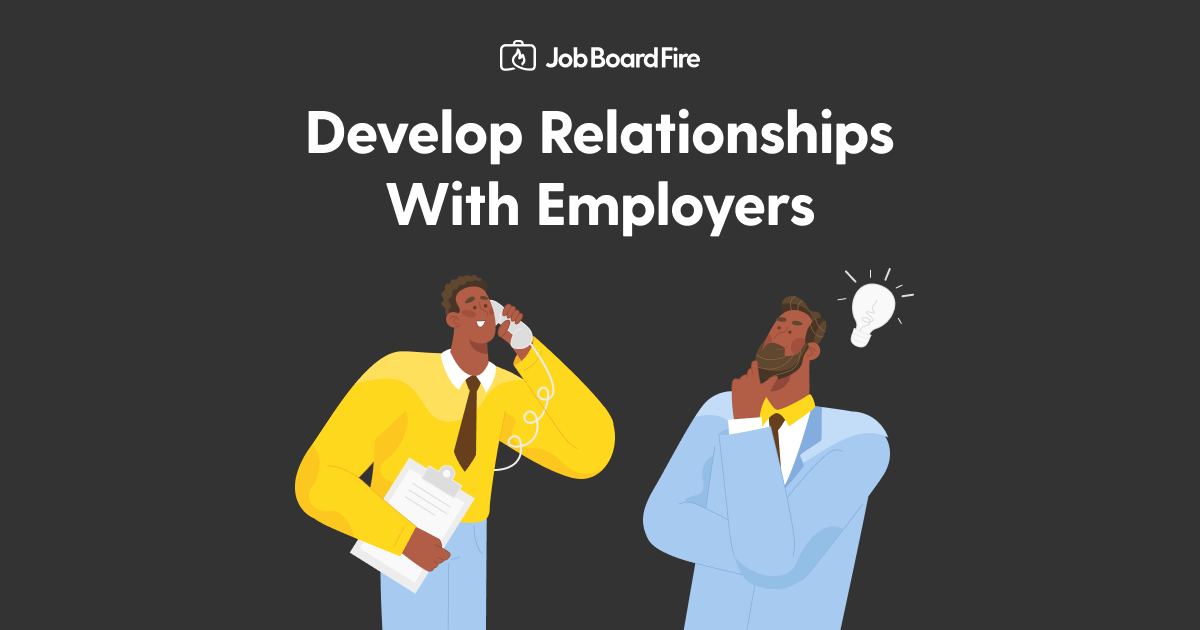
Develop Relationships With Employers
Developing relationships and partnerships with employers is an important part of running a successful job board business, as it allows you to build trust and credibility with your clients, and provide value and support to help them achieve their hiring goals. To develop relationships and partnerships with employers, you can follow these steps:
-
Identify and engage with potential employers: The first step in building relationships and partnerships with employers is to identify and connect with potential clients. Research employers within your target industries and locations, and reach out through channels like social media, email, or direct outreach. Engaging with these employers helps you understand their hiring needs and goals, while also allowing you to assess how your job board can provide value and support in meeting their recruitment objectives.
-
Offer value and support: To effectively develop relationships and partnerships with employers, you need to offer value and support to help them achieve their hiring goals. This can include providing job posting and applicant tracking services, offering advice and guidance on hiring and recruiting, and sharing insights and trends to help employers stay up-to-date on the latest developments in their industry. This helps build trust and credibility with employers, and establish yourself as a valuable partner who can help them succeed.
-
Develop personalized solutions: To build strong relationships and partnerships with employers, you need to develop personalized solutions that are tailored to their specific needs and goals. This can include creating custom job posting packages, offering specialized applicant tracking systems, and providing training and support to help employers use your job board effectively. You'll then demonstrate your understanding of employers’ unique needs, and create a tailored and effective offering that can help them achieve their objectives.
-
Establish a relationship-building process: To effectively build relationships and partnerships with employers, establish a clear process that focuses on connecting, offering value, and crafting tailored solutions. This process ensures a systematic approach to building long-term, sustainable partnerships. It can include a schedule for reaching out to potential employers, regular check-ins to assess their evolving needs, and ongoing support to help them achieve their recruitment goals. By implementing this structured approach, you can consistently provide value and foster strong, meaningful relationships with employers, ultimately supporting their success and your job board’s growth.
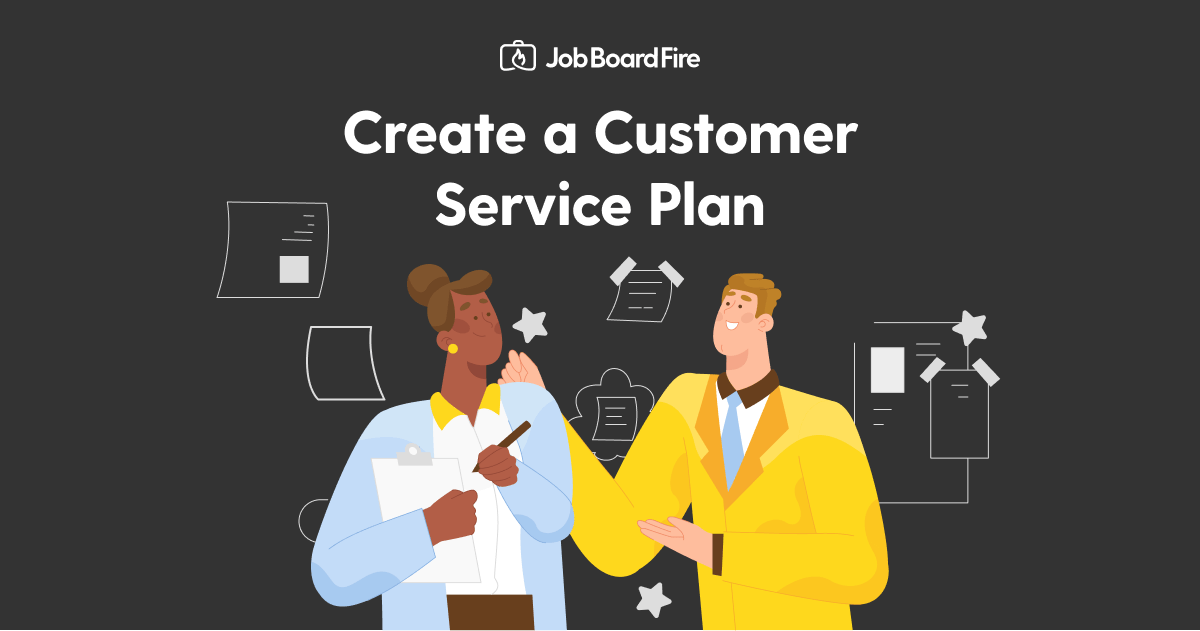
Create a Customer Service Plan
A strong customer service plan is key to running a successful job board business. It ensures job seekers and employers have positive experiences on your platform, which can boost satisfaction and retention.
Start by setting up clear channels for customer inquiries. This can include dedicated email addresses or phone lines for both job seekers and employers. Establish response time guidelines, prioritizing urgent requests, such as employers needing to fill positions quickly or job seekers seeking assistance with their search.
Next, develop a streamlined process for handling complaints and issues. This includes documenting complaints, working toward resolutions, and training your customer service team to manage different types of issues. Ensure your team knows when to escalate concerns to management.
Lastly, implement a feedback and review system. Regularly gather feedback through surveys and encourage customers to leave reviews on your platform or third-party sites. By actively responding to feedback, you can identify areas to improve and make necessary adjustments to better meet customer needs.
An effective customer service plan—focusing on prompt responses, efficient complaint resolution, and continuous feedback—helps enhance the overall customer experience, driving satisfaction and loyalty to your job board.
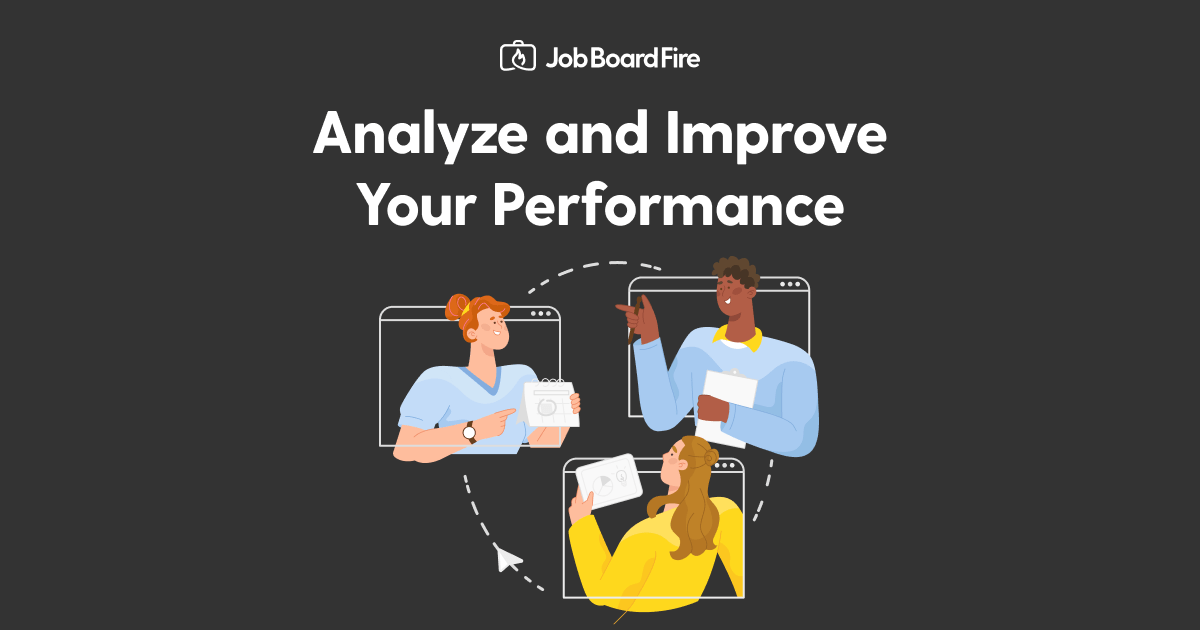
Analyze and Improve Your Performance
To effectively analyze and improve the performance of your job board business, you need to identify key performance indicators (KPIs) that can help you to measure and assess the success of your platform. Some possible KPIs for a job board business can include:
-
Average number of applications per job posting: This metric measures the average number of applications received for each job posting on your job board, and can help you to assess the quality and relevance of job seekers to a job posting.
-
Average time to fill a job posting: This metric measures the average amount of time it takes for a job posting to be successfully filled, and can help you to assess the efficiency and effectiveness of your job board in connecting job seekers with employers.
-
Candidate retention rate: This metric measures the percentage of candidates who are successfully hired and remain with the company for a defined period of time, and can help you to assess the effectiveness of your job board in helping employers find and retain top talent.
-
Employer churn rate: This metric measures the percentage of employers who stop using your job board within a defined period of time, and can help you to assess the satisfaction and loyalty of your employer clients.
-
Job seeker churn rate: This metric measures the percentage of job seekers who stop using your job board within a defined period of time, and can help you to assess the satisfaction and loyalty of your job seeker audience.
-
Job posting engagement rate: This metric measures the level of engagement of job seekers with a job posting, and can include metrics such as clicks, views, and shares. This can help you to assess the popularity and relevance of a job posting, and identify areas for improvement.
-
Employer engagement rate: This metric measures the level of engagement of employers with your job board, and can include metrics such as job postings, applicant tracking, and other services and products. This can help you to assess the value and effectiveness of your job board, and identify areas for improvement.
-
Job seeker engagement rate: This metric measures the level of engagement of job seekers with your job board, and can include metrics such as job searches, applications, and other services and products. This can help you to assess the value and effectiveness of your job board, and identify areas for improvement.
-
Customer lifetime value: This metric measures the total value of a customer over the course of their relationship with your job board, and can help you to assess the long-term value and potential of your audience. By tracking and analyzing this KPI, you can gain insights into the long-term potential of your job board business, and identify areas for improvement and growth.
Once you have identified your KPIs, you can analyze your metrics to identify areas for improvement, and implement changes and improvements to increase the effectiveness of your job board. This can include improving the user experience of your website, adding new features and services, and implementing a customer feedback and review system to gather feedback from your audience. By analyzing and improving the performance of your job board, you can ensure that your platform is providing value and support to your target audience.

Manage Risks and Challenges
Running a job board business can be a rewarding and challenging experience, and managing the risks and challenges that come with it is an essential part of success. Some common risks and challenges of running a job board business can include:
- Competition: To manage competitive risk you can conduct market research to assess the competitive landscape, identify your unique value proposition, and implement strategies to differentiate your job board from others.
- Technology: Job boards rely on technology to function, and technical issues can disrupt your platform and impact your audience. To manage this risk, you can implement robust technology infrastructure, regularly test and update your systems, and have contingency plans in place for unexpected issues. Job board software providers like Job Board Fire help ease the burden of managing your own technology platform so you can focus on growing your job board business.
- Customer satisfaction: Job seekers and employers are the core of your job board business, and their satisfaction is essential to your success. To manage this risk, you can implement a customer feedback and review system, regularly assess customer satisfaction, and implement strategies to address any issues or concerns.
Overall, managing the risks and challenges of running a job board business requires a proactive and strategic approach, and it’s important to regularly assess and address potential risks and challenges to ensure the success and sustainability of your platform.
Current Industry Trends
Staying current with the latest trends in the job board industry is essential to maintaining a competitive edge. Some of the biggest trends in the indutry include:
- Ai Integration: The next generation of job boards are leaning into AI to deliver personalized job recommendations and automate key parts of the hiring process. By integrating machine learning algorithms, you can surface the most relevant jobs for each candidate based on behavior, search history, and skills rather than just keywords. AI can also being used to auto-screen resumes, score candidates, or even generate job descriptions for employers. Including AI in your platform isn’t just about tech novelty — it’s about significantly improving user experience and placement outcomes.
- Gamification and Feedback Loops: Gamification is an emerging trend in the job board industry that’s gaining attention for its ability to drive user engagement and create a more dynamic experience for both job seekers and employers. By adding simple, game like elements — such as achievement badges, profile progress bars, “top applicant” labels, or interactive quizzes that match users to job categories — job boards can turn a routine job search into something more interactive and rewarding. For employers, features like responsiveness scores or reputation badges can encourage better behavior and improve the overall hiring experience. Gamification not only keeps users active on the platform longer, but it also helps job boards collect richer data about user preferences and behavior. This can then be used to improve matching algorithms and personalize content.
- Talent Pools and Candidate Relationship Management: Job boards have evolved beyond simple job postings to become strategic talent relationship hubs, enabling employers to build and nurture long-term candidate pipelines. By leveraging integrated candidate relationship management (CRM) tools, recruiters can track, segment, and engage both active and passive candidates with personalized alerts, pipeline oversight, and automated re-engagement campaigns. These tools help maintain consistent communication, identify top talent early, and streamline the hiring process. This proactive strategy turns hiring into an ongoing competitive advantage—helping companies hire faster, improve candidate experience, reduce turnover, and stay ahead in today’s tight labor market.
When used thoughtfully, AI can greatly improve how well candidates and jobs are matched, gamification helps turn a basic job board into a more engaging annd rewarding experience, while Candidate Relationship Management helps streamline a stronger hiring process.
These are just three of the many exciting trends shaping the future of job boards. Staying ahead of these changes and choosing the ones that align with your goals can give your platform a real edge in a fast moving industry.
How to stay ahead of Industry Trends and Best Practices
To stay ahead of indutry trends and best practices, start with engage with industry organizations, attend relevant conferences and webinars, follow leading publications and blogs, and connect with peers and experts in the field. These actions will keep you informed about key developments and provide valuable insights into the evolving landscape.
Consistently engaging with these resources will help you stay ahead of the curve and ensure your job board remains relevant and effective.
A simple way to stay updated on industry news and trends is to subscribe to trusted platforms like the Job Board Academy by Job Board Fire.
Conclusion
Starting a job board business can be a rewarding and profitable endeavor. By clearly defining your target audience and selecting a niche, you can tailor your efforts to meet the needs of a specific group, boosting your chances of success. Building a user-friendly, professional website with the right features and developing a solid marketing strategy are essential steps in launching and growing your platform. Additionally, fostering strong relationships with employers, regularly analyzing performance, and staying current with industry trends will help you navigate challenges and ensure the long-term success of your job board business.
Ready to kick off your job board business? Get a demo of our job board platform.
Learn from our Job Board Academy
Access our free resources with everything you need to know to build, launch and scale a successful niche job board.


